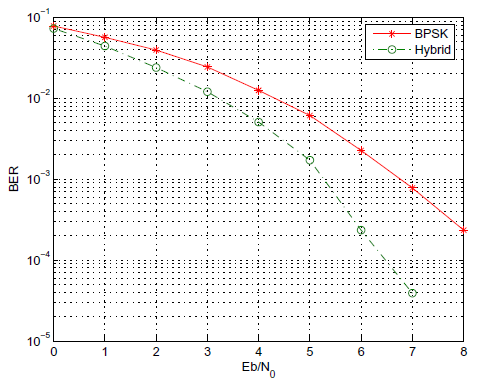TR2005-087
A Hybrid UWB Modulation Design Compatible for Both Coherent and Transmit-Reference Receivers
-
- , "A Hybrid UWB Modulation Design Compatible for Both Coherent and Transmit-Reference Receivers", IEEE International Conference on Communications (ICC), June 2006, vol. 10, pp. 4741-4745.BibTeX TR2005-087 PDF
- @inproceedings{Orlik2006jun,
- author = {{{Orlik, P. and Zhao, S. and Molisch, A.F.}}},
- title = {{{A Hybrid UWB Modulation Design Compatible for Both Coherent and Transmit-Reference Receivers}}},
- booktitle = {IEEE International Conference on Communications (ICC)},
- year = 2006,
- volume = 10,
- pages = {4741--4745},
- month = jun,
- issn = {1550-3607},
- url = {https://www.merl.com/publications/TR2005-087}
- }
- , "A Hybrid UWB Modulation Design Compatible for Both Coherent and Transmit-Reference Receivers", IEEE International Conference on Communications (ICC), June 2006, vol. 10, pp. 4741-4745.
-
MERL Contact:
-
Research Area:

Abstract:
In a pulsed UWB system, either coherent receivers or transmit-reference (TR) receivers can be used to demodulate the signals. For coherent receivers, which are typically based on a Rake Structure, the large number of resolvable multipaths is a major challenge for channel estimation and receiver complexity. TR receivers can effectively collect energy from all the received multipath components with much smaller complexity, but show reduced performance. Current modulation formats are tuned to either coherent or TR receivers, but cannot interoperate with both of them. In this paper, we propose an innovative modulation scheme that enables the useage of TR and coherent recievers in the same wireless network. The modulation allows demodulation by TR receivers, while at the same time enabling a coherent receiver to fully exploit all available signal energy, and actually to perform slightly better (by 1.8 dB) than a coherent receiver working with conventional BPSK modulation; this additional gain can be interpreted as a coding gain of a trellis-coded modulation scheme. The scheme thus allows the network designers to trade off performance vs. complexity in the receivers, while allowing a uniform signaling (modulation) scheme for all transmitters.
Related News & Events
-
NEWS ICC 2006: 2 publications by Philip V. Orlik, Jinyun Zhang and others Date: June 11, 2006
Where: IEEE International Conference on Communications (ICC)
MERL Contacts: Jinyun Zhang; Philip V. OrlikBrief- The papers "Approximating the Sum of Correlated Lognormal or Lognormal-Rice Random Variables" by Mehta, N.B., Molisch, A.F., Wu, J. and Zhang, J. and "A Hybrid UWB Modulation Design Compatible for Both Coherent and Transmit-Reference Receivers" by Orlik, P., Zhao, S. and Molisch, A.F. were presented at the IEEE International Conference on Communications (ICC).
